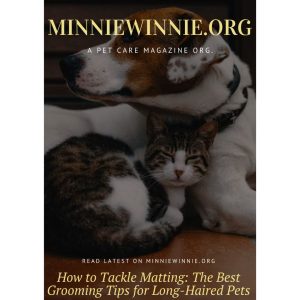Why Fur Health is Vital for Your Pet’s Overall Wellness
When it comes to pet care, much attention is often given to diet, exercise, and regular veterinary check-ups. However, one crucial aspect that sometimes gets overlooked is fur health. The condition of your pet’s fur is a clear indicator of their overall well-being and can significantly impact their health and quality of life. Here’s why maintaining your pet’s fur health is vital for their overall wellness.
The Role of Fur in Pet Health
Fur serves multiple essential functions for pets, ranging from protection to temperature regulation. Understanding these roles underscores the importance of maintaining optimal fur health.
1. Protection
Fur acts as a barrier against external elements. It protects pets from harmful UV rays, physical injuries, and environmental hazards such as dirt and debris. Healthy fur can prevent cuts, scrapes, and insect bites, reducing the risk of infections and other health issues.
2. Temperature Regulation
Pets rely on their fur to regulate body temperature. In colder climates, fur provides necessary insulation to keep them warm, while in hotter environments, it can protect against sunburn and overheating. Proper grooming helps maintain this balance, ensuring pets are comfortable regardless of the weather.
3. Sensory Function
For many animals, fur is not just about protection and warmth; it also plays a sensory role. Whiskers, for example, are highly sensitive and help pets navigate their surroundings. Keeping these areas well-groomed ensures pets can effectively use their natural sensory tools.
Signs of Unhealthy Fur
Recognizing the signs of unhealthy fur can help pet owners address issues before they escalate. Some common indicators include:
1. Dull and Dry Fur
Fur that lacks shine and feels dry can indicate poor nutrition or underlying health problems. Ensuring a balanced diet rich in essential fatty acids can help restore luster and softness.
2. Excessive Shedding
While some shedding is normal, excessive hair loss can signal stress, allergies, or skin conditions. Regular grooming and veterinary check-ups can help manage and identify the root cause.
3. Bald Spots or Thinning Fur
Patchy or thinning fur often points to parasites, fungal infections, or hormonal imbalances. Immediate attention from a vet is crucial to diagnose and treat the underlying issue.
4. Matted Fur
Mats and tangles can cause discomfort and skin irritation. Regular brushing and proper grooming are essential to prevent mats from forming and to keep your pet’s coat healthy.
Maintaining Fur Health
Maintaining your pet’s fur health involves a combination of proper nutrition, regular grooming, and prompt medical care. Here are some tips to ensure your pet’s fur remains in top condition:
1. Balanced Diet
Nutrition plays a critical role in fur health. Ensure your pet’s diet includes high-quality proteins, omega-3 and omega-6 fatty acids, and essential vitamins and minerals. These nutrients support healthy skin and a shiny coat.
2. Regular Grooming
Regular grooming is essential for maintaining fur health. This includes brushing, bathing, and trimming as necessary. Brushing helps remove loose hair, distribute natural oils, and prevent matting. Bathing should be done with pet-specific shampoos that are gentle on the skin.
3. Flea and Tick Prevention
Parasites like fleas and ticks can cause significant damage to your pet’s fur and skin. Use preventive treatments and check your pet regularly for any signs of infestation. Early detection and treatment are key to preventing serious health issues.
4. Hydration
Ensure your pet stays well-hydrated. Adequate water intake is crucial for maintaining skin and fur health. Dehydration can lead to dry, brittle fur and increase the risk of skin problems.
5. Regular Vet Visits
Routine veterinary check-ups are vital for detecting and addressing health issues early. Your vet can provide specific advice on maintaining fur health based on your pet’s breed, age, and overall condition.
The Psychological Impact of Healthy Fur
A well-maintained coat not only affects physical health but also has psychological benefits for your pet. Pets with healthy fur tend to feel more comfortable and confident. Regular grooming sessions can also strengthen the bond between you and your pet, providing them with reassurance and reducing anxiety.
Conclusion
Fur health is an integral part of your pet’s overall wellness. By paying attention to their coat and providing proper care, you can prevent numerous health issues and enhance your pet’s quality of life. Remember, a shiny, well-groomed coat is often a reflection of a healthy, happy pet. Taking the time to maintain your pet’s fur health is a vital investment in their long-term well-being and happiness.










